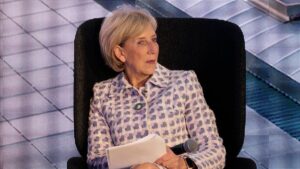Kenya’s Mrima Hill development by RareX could build alternative rare earths supply chain

RareX's Mrima Hill project could help build an alternative rare earths supply chain. Pic: Getty Images
- China’s long dominance in rare earths is making attempts to build alternative supply chains challenging
- RareX’s Mrima Hill project in Kenya combined with Iluka’s Eneabba plant are an emerging force
- Project already hosts a significant non-JORC resource close to major infrastructure
Much has been said about decoupling rare earth supply chains from China or from Chinese influence in order to reduce reliance on any one country for whatever reason.
However, the reality is that doing so isn’t easy as China has spent decades building up its production and processing capability and it is not a stretch to say that it is really the only country that can take all types of feedstocks – rare earth concentrates, mixed rare earth carbonates and mixed oxides – and get value out of them by separating them into their individual components.
The same is also true of the actual resources with many supposedly Western-aligned rare earth and critical minerals projects having significant Chinese ownership or offtake.
More immediately, export curbs imposed by China in April have already led European auto supplier association CLEPA to say that several production lines have shut down after running out of supplies with BMW flagging that its supplier network has been affected though its own plants are running as normal.
Likewise, Mercedes-Benz has asked its top suppliers to consider building “buffers” such as stockpiles to protect against potential threats to supply.
This led European Union commissioner for industrial strategy Stephane Sejourneto to say in early June 2025 the bloc needed to reduce its dependencies and that the export curbs have increased the EU’s will to diversify.
Even if China extended an olive branch, the fundamental risk of supply chain constrains remain a critical risk to western countries and one that needs material actions of the private sector, supported by governments, to resolve.
Meanwhile, US industry leaders including Wells Fargo Securities senior equity analyst Colin Langan have warned the restrictions are “a lot bigger issue than people realise”.
RareX (ASX:REE) managing director James Durrant told Stockhead the barrier to entry for rare earths processing was generally very high, meaning that government funding was often needed to incentivise development.
“One of the examples where you see a real effort to diversify away from that existing concentrated value chain is Ilkua’s Eneabba facility,” he said.
“It’s supported by the Australian Government – with a $1.65bn non-resources loan – to establish processing capability outside of China.
“The other is Lynas, who have been in operation for about 10 years. They have most of the rare earth value chain in Australia and Malaysia though that was ultimately spurred on by Japanese government investment.”
He added that a lot of the US Inflation Reduction Act funding had started going towards certain magnet manufacturers and metallisation plants globally.
“But it’s going to take a while until that matures, and full value chains are developed.”
Pushing the needle with Kenyan rare earths
It is not just processing, finding primary deposits that are not in Chinese hands or have minimal Chinese influence is also critical to building alternative supply chains.
For the US, that’s typically projects in the Anglosphere plus Europe or moving to insert themselves into big projects in other parts of the world like California-based explorer KoBold Metals, which is backed by US billionaires Jeff Bezos and Bill Gates, did by reaching a deal earlier this month to acquire AVZ Minerals’ interest in the Manono lithium deposit in the DRC.
“Independent sovereign nations can’t have too much exposure to any one nation-supporter and debt diplomacy can be quite crippling if it’s exerted, but they also recognise that the contributions from major nations to infrastructure development in their economy is very important,” commented Durrant.
In Kenya, China is funding construction of a major railway that will link the large Indian Ocean port city of Mombasa with Kenya’s capital of Nairobi, major roads and mining projects in the country.
As the lead proponent in the RareX-Iluka proposal to the Kenyan government for Mrima Hill, and with a team experienced in Africa, they are acutely aware of this balance and see their Australian credentials as being very favourable.
“We’re a great ally of America but we are also a major trading partner of China. That’s very important for our economy,” Durrant noted.
“I think that means it’s an attractive proposition for a project like Mrima Hill to be led by an Australian consortium with good American alignment.”
Producing separated oxides in Australia would also allow the consortium to leverage Australia’s exemption on US tariffs for light and heavy magnet rare earths.

Mrima Hill project
But all the relationships will mean nothing without the right project to go with it and that’s what RareX believes it has with the Mrima Hill project, which has been on its radar for some years.
Its history with the company dates back to when RareX was initially founded; on the idea of rare earths supporting the electronics revolution before rare earths became fashionable.
“Our foundation was a very fundamental belief in rare earths and the initial project that was acquired to seed the business was the Cummins Range project, which was a known mineralised carbonatite” Durrant said.
“It had the potential at the time for being an equivalent to a Mount Weld, a very sizable and high grade monazite carbonatite project.
“During that initial genesis of the company, we also had a particular view on global rare earth assets and were looking for others that might contribute to the portfolio because the thesis was that hard rock monazite deposits were going be the basis for the majority of commercially viable rare earth projects.”
This thesis has proved to be correct outside of China and it led the company to Mrima Hill, which was owned by the Kenyan government and was thought to be potentially available to develop with the right amount of work and over the right amount of time.
“It was pursued with a light touch to start with and then more fulsomely when I took over as CEO and subsequently managing director,” Durrant added.
The reasons for the company’s interest are simple.
For starters, Mrima Hill is large and high-grade. It currently has a non-JORC NI43-101 resource of 150Mt grading just under 4% total rare earth oxides with 0.7% niobium along with other metals.
It is also just 15km from the Indian Ocean and 85km from Mombasa.
Durrant notes that this contrasts with a lot of rare earths projects, which are typically inland and landlocked.
“Arafura, which has received a lot of good support for its Nolans project, is in the centre of the Australian continent while Lynas’ Mount Weld is 600km inland,” he said.
“To have a coastal asset of that quality was exceptionally rare. It is also close to the Kwale mineral sands project that was originally held by Base Resources but is now owned by Energy Fuels. It means the region is quite well familiar with mining.
“It is connected with a sealed road and the national grid runs nearby – that is an 85% renewables grid because of Kenya’s geothermal input.
“We realised this was the right opportunity that we needed to prosecute for Australia, for Western supply chains, for the company, and for global diversification as it could be a very significant global project that links the US, Australia and Kenya.”
Cummins Range remains a key plank of the company’s strategy thanks to its rare earths and phosphate riches that now looks to be further boosted by gallium, and, as Durrant points out, could contribute to a product mix from Mrima Hill.
Iluka rare earths
Durrant noted that the key technical risk with Mrima Hill was that delivering a multi-stage processing plant in Kenya was potentially unrealistic in the shorter term given American and Australian companies had struggled to deliver projects with the full rare earth value chain processing plants on home turf, and in advanced industrial jurisdictions, and Kenya did not have an advanced mineral processing industry as yet.
This led to a search for a partner that could do the downstream processing.
While options were limited, the company quickly settled on Iluka as its partner.
“What Iluka offered ultimately, and one of the reasons we decided to work with them, was their Eneabba asset which is also near the Indian Ocean,” Durrant said.
“The Eneabba project was already funded and partially built and it had Australian Government backing and to have that potential for monazite processing was very good for the Kenyan project.
“We considered this important for technical derisking but also to give confidence to the Kenyans that a processing pathway was real, and supported. Of course, longer term, given the scale of Mrima Hill, there is a potential pathway to deliver the full value chain in Kenya as part of a vision for a regional critical minerals hub, probably centred near Mombasa.
“And that this year marks the 60th anniversary of diplomatic relations between the two countries seemed almost poetic or symbolic,” Durrant added.
It certainly doesn’t hurt that Australian Foreign Minister Penny Wong is very much in favour of the Indian Ocean Rim Association while Curtin University, one of the participants in RareX’s proposal, is also very much in favour of Indian Ocean rim diplomacy and is keen to establish a campus in Kenya.
Iluka’s plant is designed to do separate oxides with the company flagging that operations will start in 2027 with initial feedstock coming from their monazite stockpiles already at Eneabba
“The schedule of Eneabba is ideal because it allows sufficient time for us to get the necessary social, environmental and engineering work done,” Durrant added.
Under their agreement for the phased investment, RareX and Kenya will lead early-stage development while Iluka will bring global refining capability to the table.
In turn, Mrima Hill represents a great opportunity to expand the refinery’s sources of supply and support global demand.
Iluka also has a longstanding presence in the US along with a strong US shareholder base.
Further backing for the project comes from companies such as WSP and Ausenco.
WSP is leading the social and environmental planning for Mrima Hill while Ausenco was appointed to lead feasibility studies, process design, construction readiness, and engineering work.
Related Topics

UNLOCK INSIGHTS
Discover the untold stories of emerging ASX stocks.
Daily news and expert analysis, it's free to subscribe.
By proceeding, you confirm you understand that we handle personal information in accordance with our Privacy Policy.








